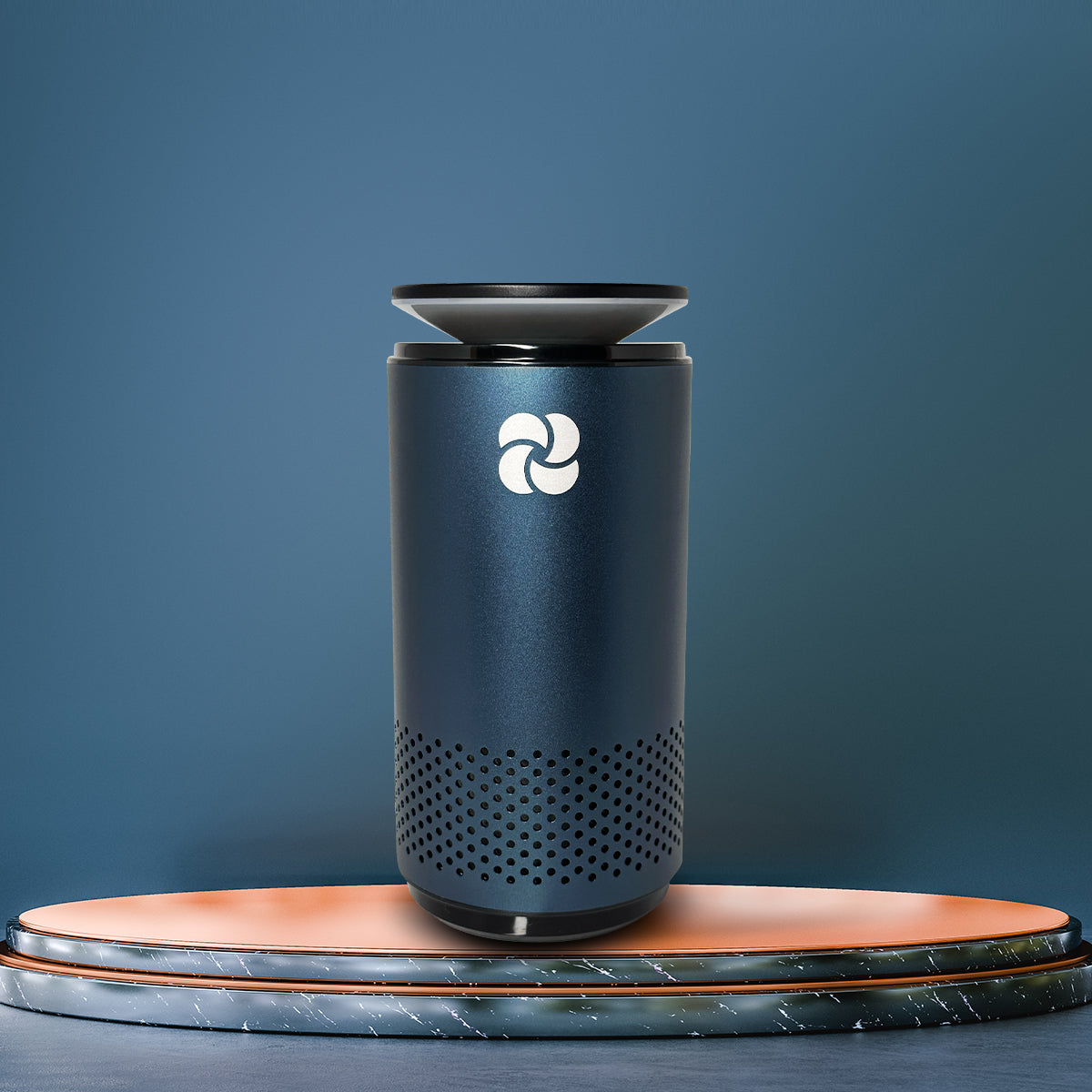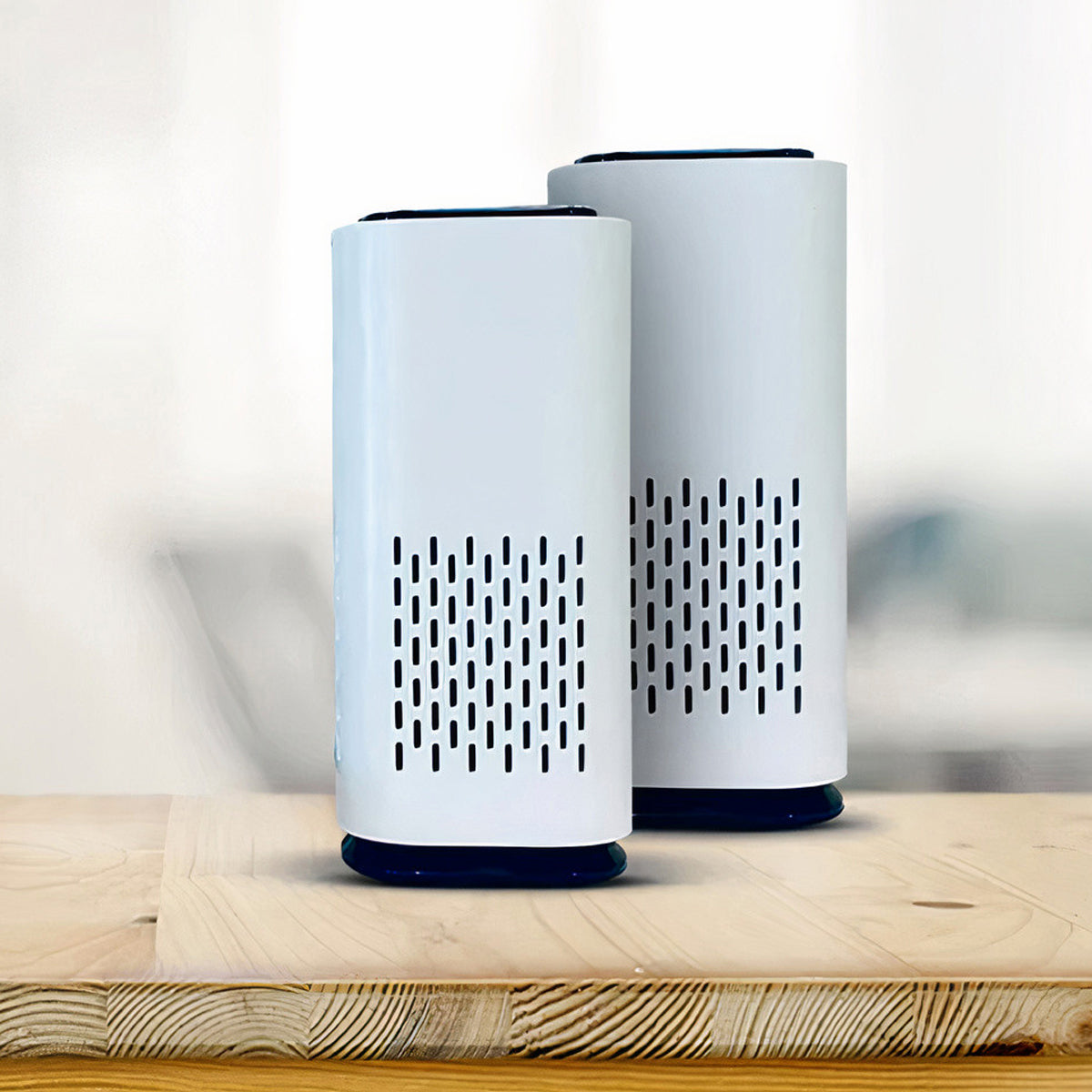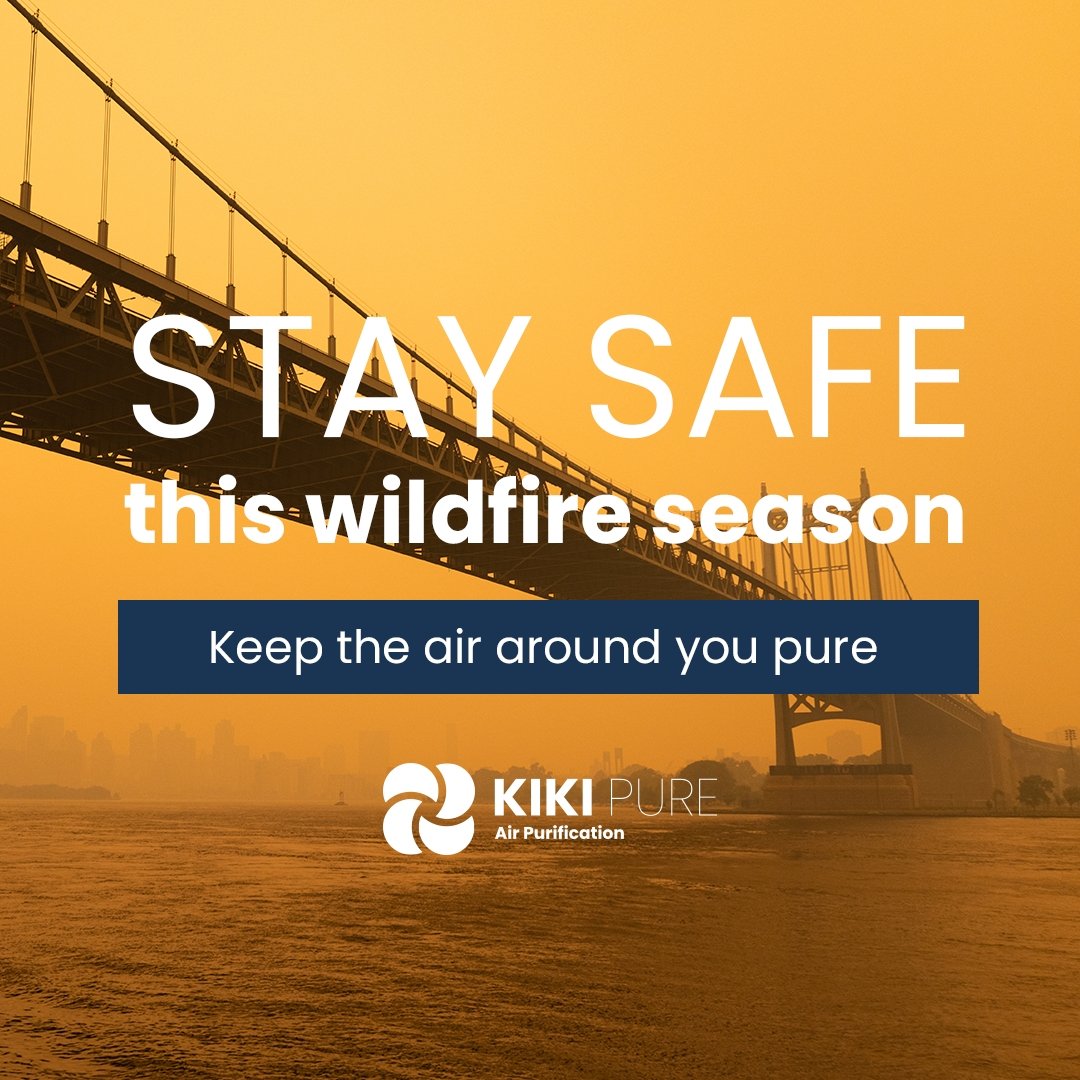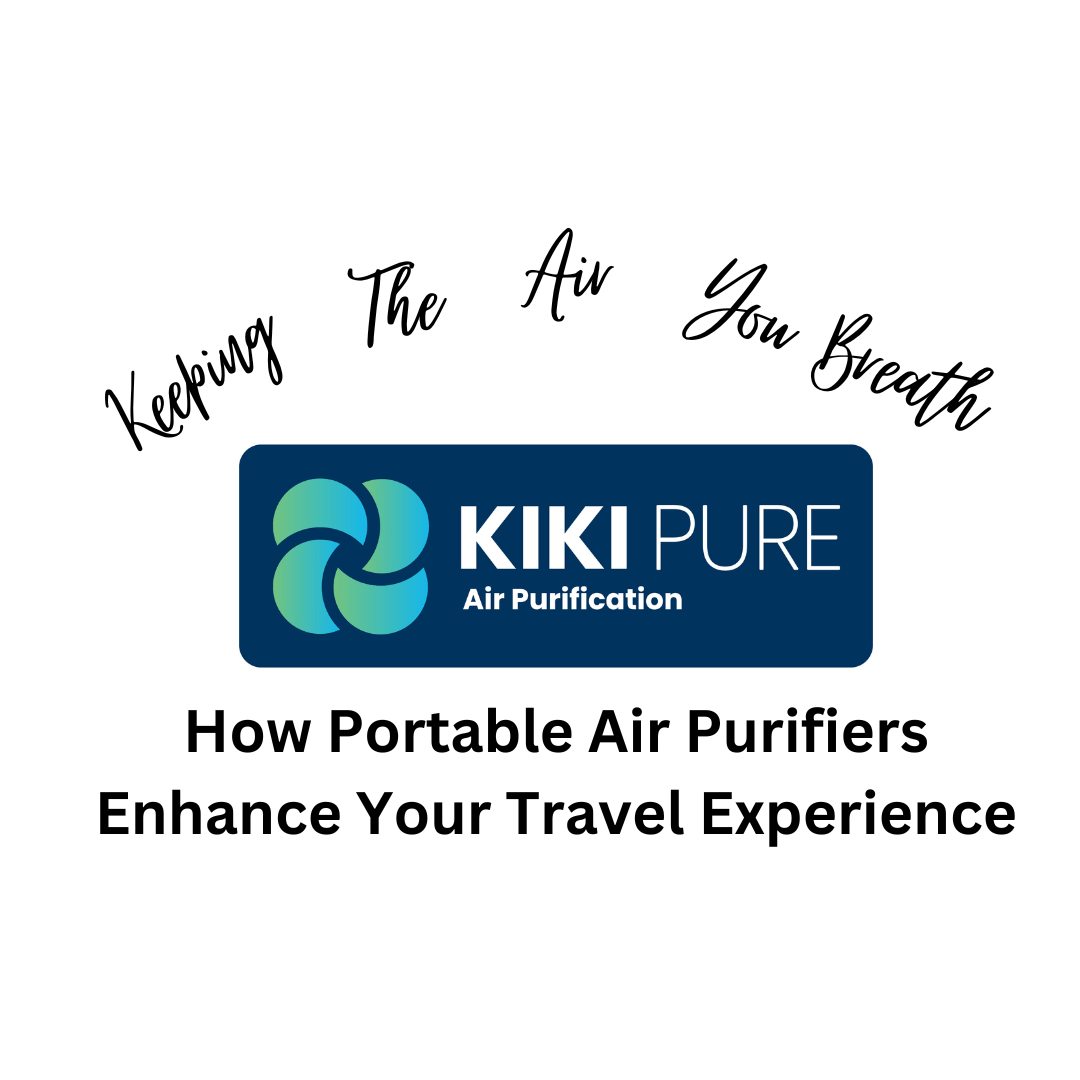Other than wearing a mask, there has been little help available for those wanting to or needing to travel; however, with the recent release of the new KIKI Pure Portable Air Purifier, traveling safely has never been easier.
In this article, we discuss the concerns related to unsafe air pollution caused by several factors and also focus on how to protect yourself and your family with KIKI Pure.
What exactly is air pollution
Air pollution refers to harmful substances in the Earth's atmosphere which can harm human health and the environment. These substances, known as air pollutants, can be in the form of solid particles, liquid droplets, or gasses. They are released into the air through natural processes and human activities.
Where does air pollution come from?
There are several primary sources of air pollution:
- Industrial emissions. Factories, power plants, refineries, and other industrial facilities release pollutants such as sulfur dioxide (SO2), nitrogen oxides (NOx), carbon monoxide (CO), volatile organic compounds (VOCs), and particulate matter (PM) into the air.
- Vehicle Emissions. Exhaust emissions from cars, trucks, motorcycles, and other vehicles contribute to air pollution. These emissions contain nitrogen dioxide (NO2), carbon dioxide (CO2), particulate matter, and other chemicals.
- Burning of Fossil Fuels. The combustion of fossil fuels like coal, oil, and natural gas for energy production, heating, and transportation releases pollutants such as sulfur dioxide (SO2), nitrogen oxides (NOx), carbon dioxide (CO2), and particulate matter.
- Agricultural Activities. Practices such as crop burning, livestock rearing, and the use of fertilizers and pesticides can release pollutants like ammonia (NH3), methane (CH4), and other volatile organic compounds.
- Wildfires. Wildfires burn through forests and grassland, producing thick, dense smoke that can cause several serious health concerns. Sulfur dioxide (SO2), nitrogen dioxide (NOx), and carbon monoxide (CO) are some of the gases released during a wildfire.
Why it’s essential to be concerned about air quality
Air pollutants can adversely affect human health and cause several health concerns, including respiratory problems, cardiovascular diseases, allergies, and cancer. They can also harm ecosystems, damage crops and vegetation, contribute to climate change, and cause visibility reduction when driving.
Efforts to reduce air pollution include the implementation of emission standards and regulations, promoting cleaner technologies, adopting renewable energy sources, improving public transportation, and raising awareness about the importance of clean air and sustainable practices.
Although there are several important initiatives to help decrease air pollution, the wildfires in Canada have proven to be one way that shows it’s virtually impossible to eliminate air pollution completely.
How to tell when air pollution is high
There are several ways to determine when air pollution levels are high in a particular area. Here are some common indicators:
- Air Quality Index (AQI). The AQI is a numerical scale providing information about the air quality in a specific location. Government agencies or environmental organizations often report it. Different categories such as "good," "moderate," "unhealthy," "very unhealthy," and "hazardous" are used to describe the air quality level.
- Local news and weather reports. News outlets and weather reports often include air quality information as part of their daily updates. They may provide current AQI readings or alert viewers when pollution levels are elevated.
- Air quality monitoring apps and websites. There are numerous smartphone applications and websites available that provide real-time air quality information. These platforms use data from monitoring stations to give you up-to-date air quality readings for your area.

When is a portable air purifier necessary?
A portable air purifier, such as the KIKI Pure A2 UV & 3 State H13 HEPA Air Purifier, can be helpful in various situations to improve air quality. Here are some instances when it's beneficial to use a portable air purifier:
- Urban Environments. If you live in or work in a densely populated area or near a busy road where air pollution from vehicle emissions and industrial activities is a concern, a portable air purifier can help remove particulate matter and pollutants from the indoor air, providing a safer and cleaner environment inside your workspace.
- While driving. Referring back to driving, you are exposed to harmful emissions from other people’s vehicles when you are in your car. This can be especially bad when driving on highways around large transport trucks or during road construction. Bringing a portable air purifier in the vehicle can help eliminate these harmful toxins caused by emissions.
- Renovations or Construction. During home renovations or construction projects, there can be an increase in dust, volatile organic compounds (VOCs) from paints and adhesives, and other airborne particles. Using a portable air purifier can help minimize the impact of these pollutants and maintain better air quality while the work is being done.
- Closed Environments. When ventilation is limited, such as in a vehicle, classroom, or hotel room with sealed windows, a portable air purifier can help remove pollutants and improve air circulation. This can be particularly useful in areas where multiple people gather, and the air quality may be compromised.
- Camping. When camping, it’s especially nice to enjoy the outdoor weather and fresh air; however, due to the Canadian wildfires, purifying the air in your tent or camper while enjoying nature would be beneficial.
What does air purification help with?
- Allergens. If you or someone in your household suffers from allergies or asthma, using a portable air purifier can help reduce airborne allergens and irritants such as pollen, dust mites, pet dander, and mold spores. It can provide relief and create a cleaner environment for individuals with respiratory sensitivities.
- Smoke and odors. Portable air purifiers with HEPA filters effectively capture and reduce odors from cooking, tobacco smoke, pets, or other sources. They can help freshen the air and eliminate unpleasant smells in your living space.
- Airborne germs and viruses. KIKI Pure air purifiers utilize filters and technology that can help trap or inactivate airborne germs and viruses, reducing the risk of respiratory infections and promoting a healthier environment.

How do I know which air purifier is best for me?
When choosing a portable air purifier, consider the recommended room size, filter replacement costs, noise levels, and any specific essential features. It's also helpful to read reviews and compare specifications to find the best portable air purifier that meets your requirements.
A portable air purifier can be a handy companion while traveling due to its sleek, ultra-quiet, and portability. This one offers up to 12 hours of battery life on a single charge, which can be handy while traveling long distances.
Traveling safely is very important, and today, with wildfires spreading across Canada at alarming rates and the high level of pollution caused by several other factors, having a portable air purification device on hand can ultimately save you and your family from inhaling toxic pollutants that could make you sick. The KIKI Pure Air Purifier is the ultimate companion to keep you and your loved ones safe while traveling this year.
About the Author
Amanda Jane is a freelance writer with a 15-year background as a nurse. Recognizing the importance of relaying complex medical information in an accessible manner, Amanda discovered her passion for writing as a means to bridge the gap between medical expertise and the public's understanding. Amanda strives to create impactful content that inspires, educates, and promotes well-being by combining her medical expertise and journalistic skills into everything she writes.
Resources
Government of Canada. Wildfire Smoke 101: Wildfire Smoke and Your Health. https://www.canada.ca/en/health-canada/services/publications/healthy-living/wildfire-smoke-health.html
Journal of Geographical Research. Air quality impacts of the October 2003 Southern California wildfires. https://agupubs.onlinelibrary.wiley.com/doi/full/10.1029/2004JD004626
The New England Journal of Medicine. Where there’s wildfire, there’s smoke. https://www.nejm.org/doi/full/10.1056/NEJMp1716846
Environmental Toxicology and Pharmacology. Wildfire smoke exposure and human health: Significant gaps in research for a growing public health issue. https://www.sciencedirect.com/science/article/abs/pii/S1382668917302478
Lung Cancer Journal. Impact of respiratory symptoms on lung cancer: 30-year follow-up of an urban population. https://www.sciencedirect.com/science/article/abs/pii/S0169500207005442





